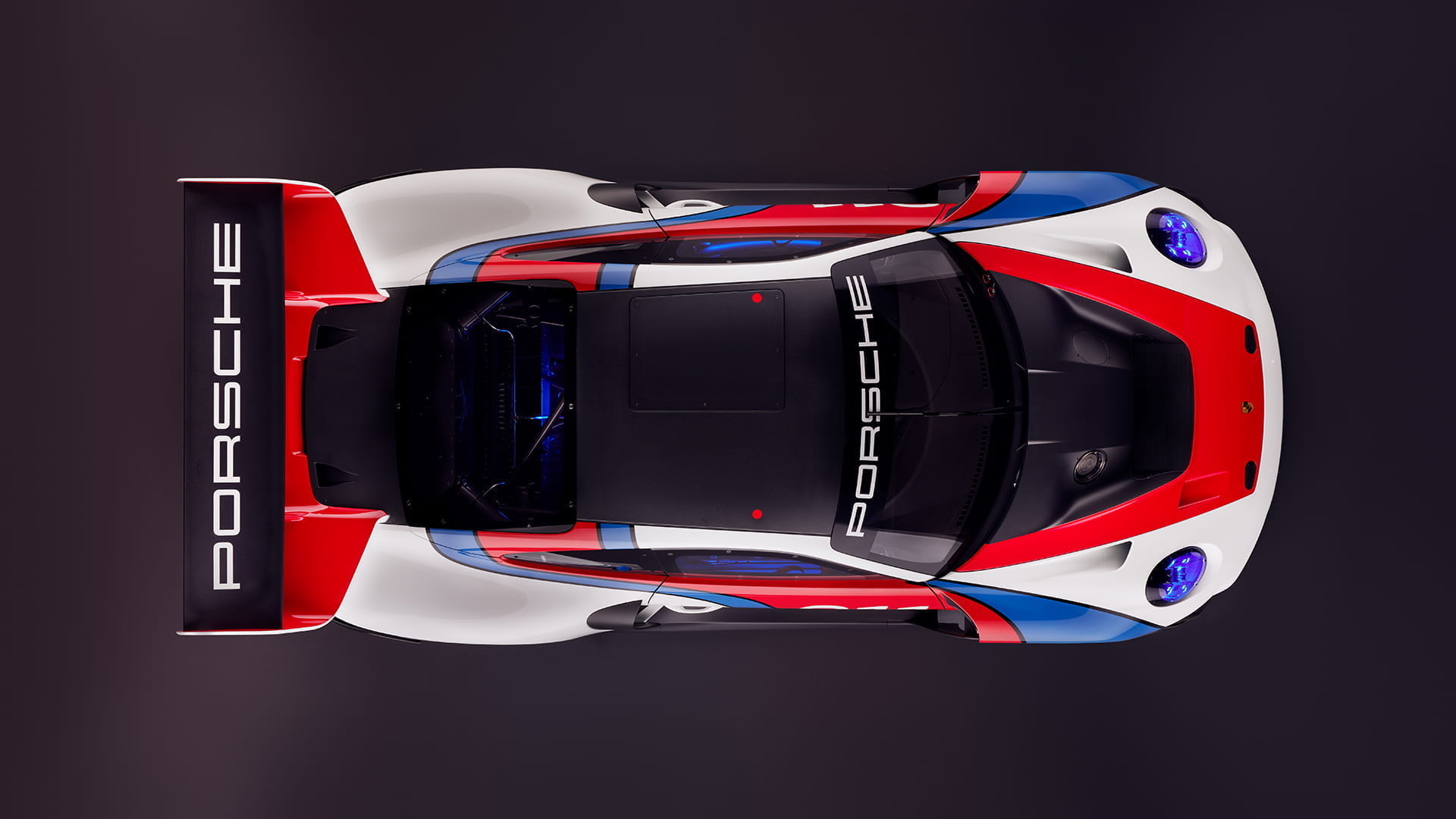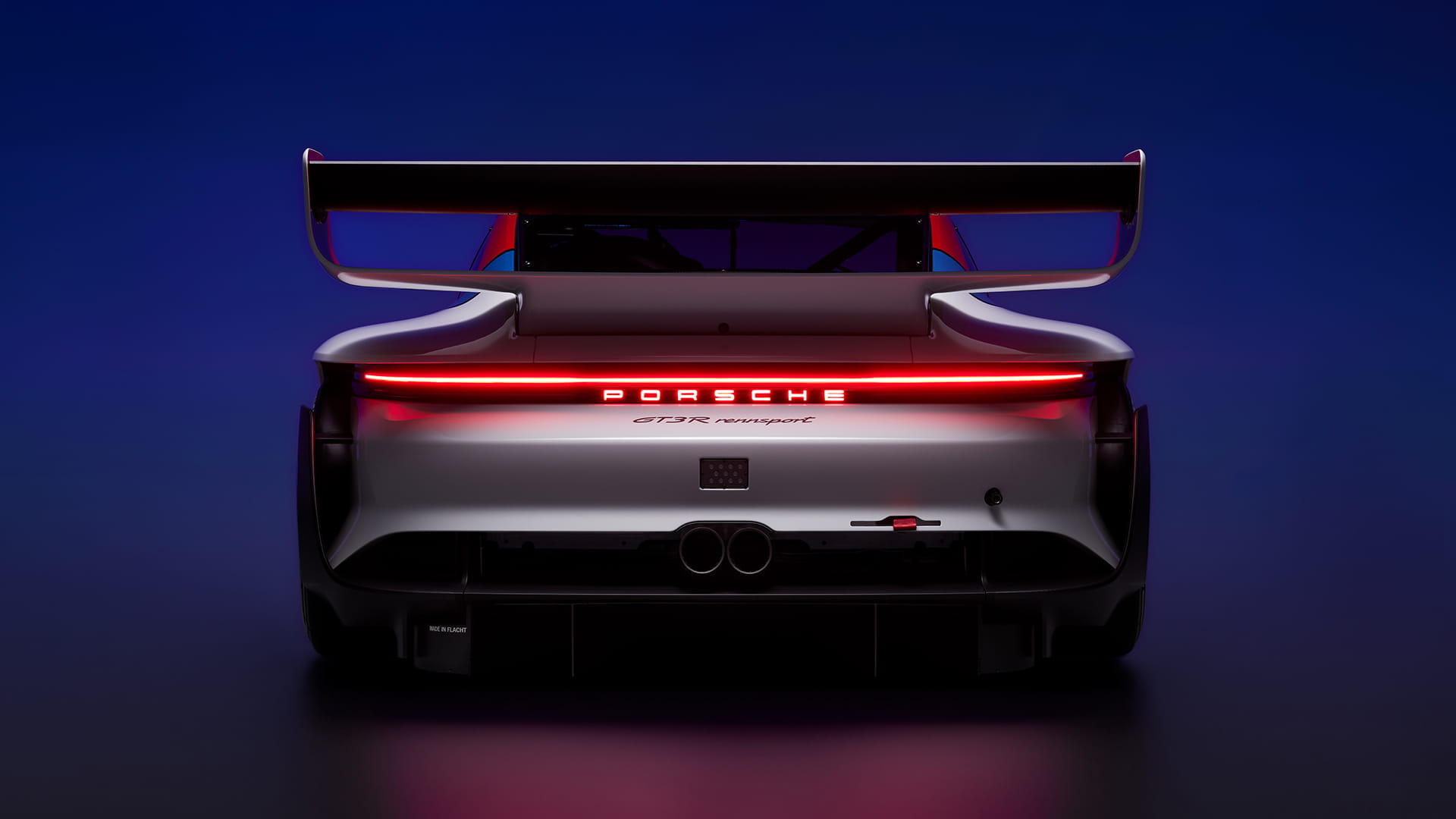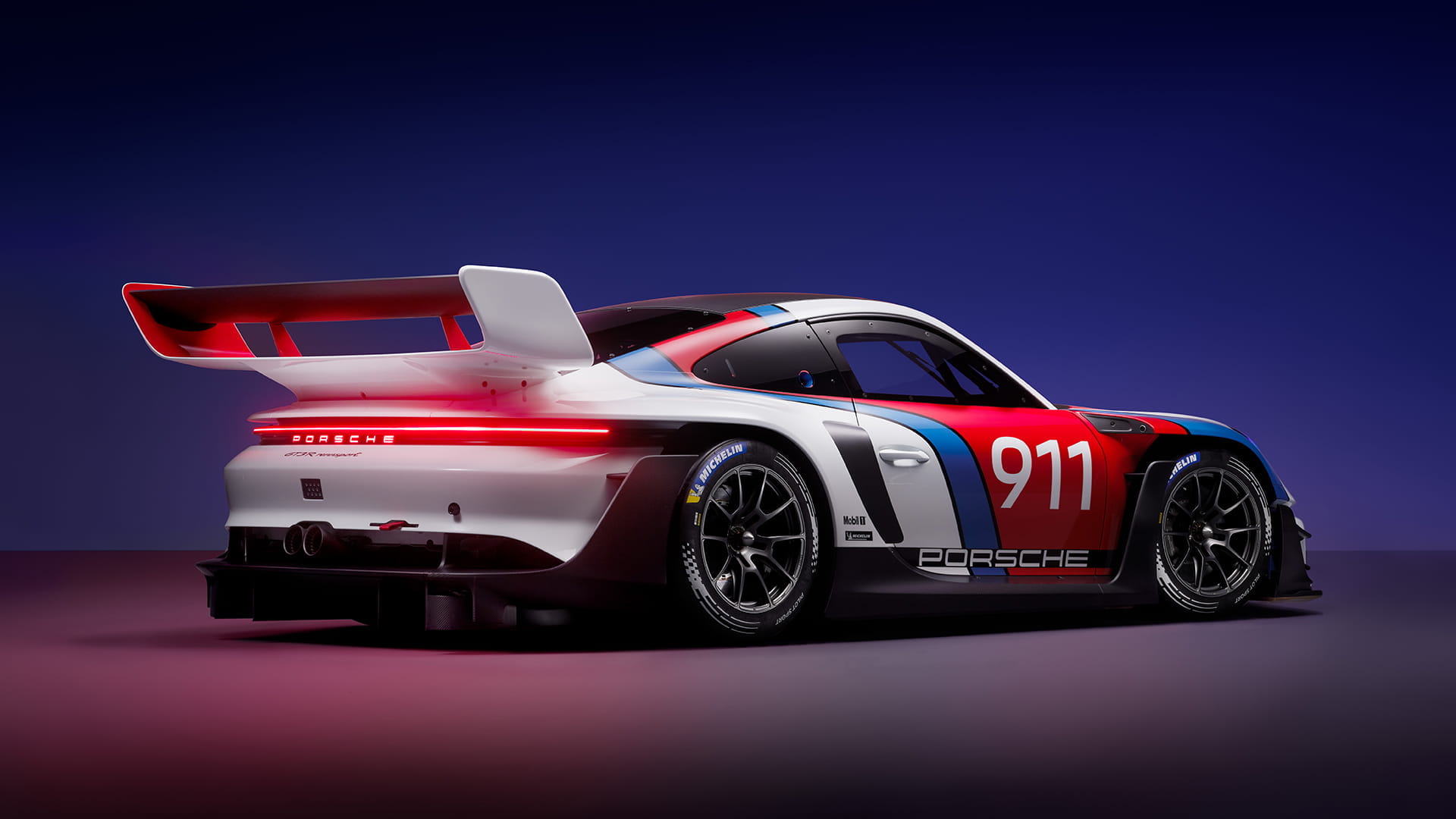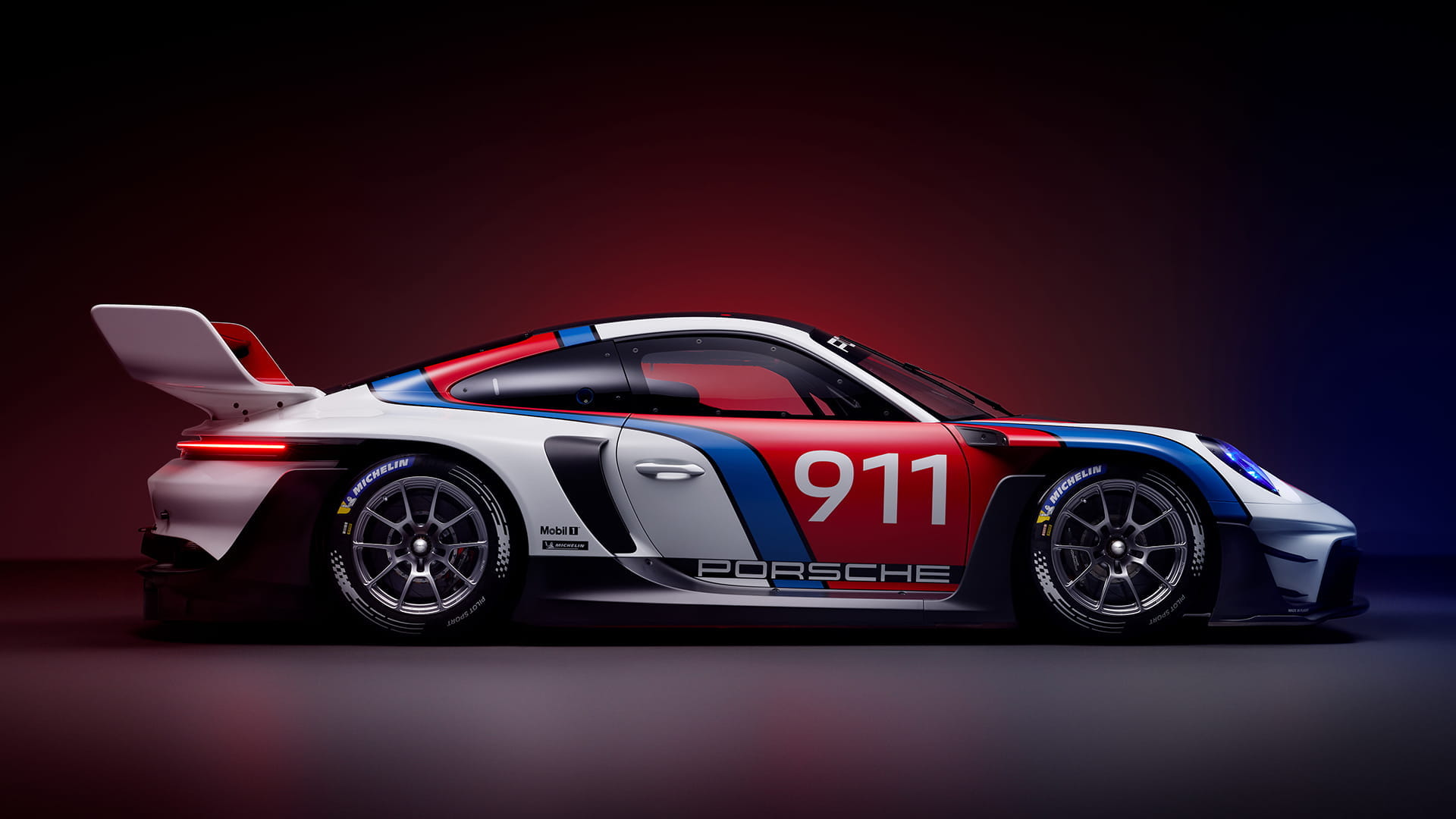Porsche has introduced a 911 GT3 R that redefines the concept of a track toy by having so much power and downforce that it is against the law. According to FIA competition regulations, it is prohibited.
The competition 911 GT3, on which the Rennsport is based, was created primarily to compete in FIA or IMSA races like Le Mans or the Daytona 24, where stringent regulations regulate the “Balance of Power” regarding a vehicle’s weight, gearing, and allowed horsepower and aerodynamics. What if such regulations weren’t in place, wonders the 911 GT3 Rennsport?

The 911 GT3 Rennsport was created by Grant Larson and Thorsten Klein of the Style Porsche team, which is in charge of many of Porsche’s one-of-a-kind and limited-edition projects.
All other body panels are distinct from those on the homologated racing vehicle, except the hood and roof, which are shared with the normal GT3 R.
The GT3 R Rennsport only has its own air intakes and ground effects. Even the mirrors have been eliminated in favor of a three-camera system that displays traffic for the driver on a screen in the cockpit.

Of course, we refer to other racers as “traffic.” You can’t get much more illegal than the GT3 R Rennsport, and if you attempt to take it through a fast-food window, you probably won’t get away with it.
On the large rear wing, modeled on the Brumos Porsche 935/77, which won the 1978 24 Hours of Daytona, there is plenty of area to lay your lunch if you did. The wing is more useful than a bench for a picnic.
Since it was so severe, Porsche had to incorporate extra support to keep up the downforce. Nevertheless, you’ll have to eat alone as the Rennsport variant, like the GT3 R, is a single-seater with a roll cage that takes up most of the inside space.

The GT3 R Rennsport is virtually identical to the GT3 R below. The automobile has custom Michelin tires on it. Uneven-length control arms are used in the front suspension, while multilink suspension is used in the back.
Porsche Racing offers the car with the chassis already calibrated for overall performance, and the KW Shocks are five-way adjustable. Shims that are on hand can be used for further fine-tuning.
With titanium backing plates under the pads, the AP brakes’ aluminum monoblock construction reduces unsprung weight by about two pounds. Moreover, the gasoline tank is lighter by the same amount. No air conditioning is present. With a vented seat, the driver is kept cool. A curb weight of 2734 pounds is intended.

The GT3 Rennsport is available in seven distinct colors. The preferred color is Ruby Star, which you should like; however, Agate Grey and raw carbon are the norm. Also, three liveries inspired by Porsche’s history will be offered:
One based on the Corkscrew at Laguna Seca, one in the traditional red and white of Porsche Racing, and one in different shades of blue.
Although if the car they are affixed is a right-ole cheater, all GT3 Rennsports are mounted on 18-inch BBS wheels that fulfill the technical specifications of a center-locking competition wheel.

Power is one of the main restrictions in FIA racing. However, the GT3 R Rennsport doesn’t follow those guidelines.
The ordinary GT3 R’s 4.2-liter naturally aspirated flat-six engine is used in the Rennsport. Still, instead of producing the typical 557 horsepower, the special edition’s direct injection is designed particularly to operate on E25 bioethanol and eFuel, but it can also run on regular gasoline.
A sequential six-speed gearbox transmits all of the power to the rear wheels. The GT3 R Rennsport is 12 mph quicker than the GT3 R at the top end thanks to a revised sixth gear and paddle shifters on the steering wheel. There is an unmuted version if you want to hear it.
But, two muted and catalytic convertor variants are also listed on the purchase form for individuals who might ever wish to hear anything different or run at a track with decibel constraints.

Porsche only produces 77 units of the $1,046,000 GT3 R Rennsport, so place your orders immediately.

